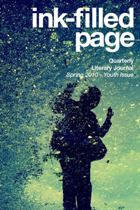Italic type was first produced in the beginning of the 16th century as a cursive typeface, one based on calligraphic handwriting of the Italian humanist Poggo Bracciolini. Whereas the typeface was originally used to print very compact yet legible volumes, italics are currently used to emphasize particular titles, names, phrases, words, and symbols within text set to roman type.
Writers should use italics sparingly to emphasize particular words or phrases. If words or phrases appear italicized too often, they quickly lose their force. Writers can usually vary the sentence structure to provide force to the emphasized words rather than relying on italics to carry the weight of the sentence.
The monster was found under the bed.
Yes, but what do you think of the chocolate cookies?
Unfamiliar words and phrases from foreign languages should be italicized, but familiar foreign words–those often used in English–do not need to be placed in italics. If a foreign word or phrase is used multiple times in a text, only the first instance needs to be italicized.
The motto of my state is esse quam videri.
Sheepskin boots were popular a few years ago, but now they seem passé.
If a word or phrase is used to reference the word or phrase itself, the term should be italicized. These nonfunctional terms may also be set in quotation marks, but italics are the traditional format. This case of nonfunctional terms also applies to letters used as letters; these letters should be italicized.
What is the definition of antidisestablishmentarianism?
Excuse me, sir. How many p’s are in your name?
When used correctly, italics can add force to your sentence, allowing a reader to make a distinction between a word or phrase and the rest of the sentence. From its origins as a separate typeface, italics serve numerous uses alongside roman type. However, it takes careful consideration to master italics.








